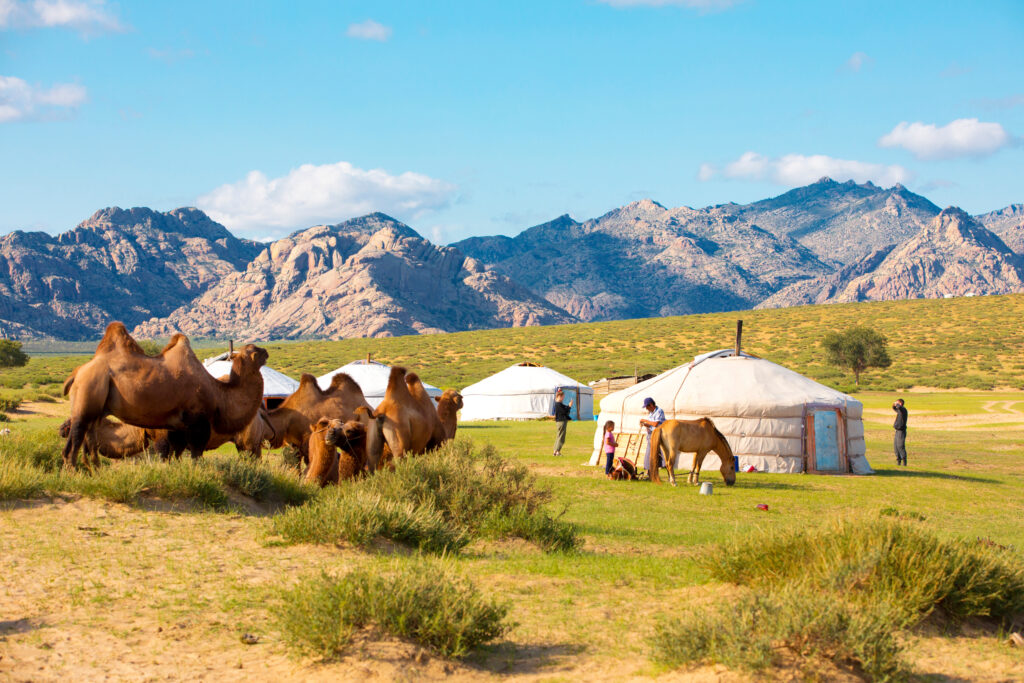
Preserved from mass tourism, Mongolia is a privileged destination for those wishing to discover a land of traditions. In this country dominated by the gigantic Gobi Desert, population density is the lowest in the world. Nomads live to the rhythm of their herds, opening their arms wide to visitors. If you're afraid of adventure, steer clear: the temperature swings are sudden and the roads tortuous! But it would be a shame not to discover the empire of the steppes and its infinite beauty, from the rugged mountains of the north to the arid desert of the south... A trip to Mongolia isn't exactly relaxing, but it's undeniably magical, exotic and unforgettable. So, what to do and see in Mongolia? Here are the 13 most beautiful places.
1. Karakorum, the fallen capital
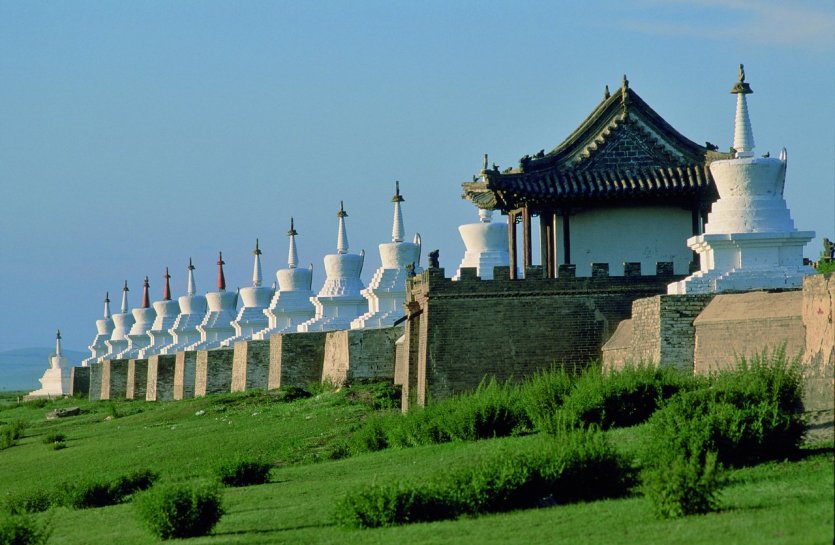
eric Martin - Iconotec
In 1220, Genghis Khaan made Karakorum the capital of the Mongol Empire. The heart of administrative, cultural and commercial life in the 13th century, the city has now lost all its former fervor. However, archaeological excavations have uncovered a tiny part of this Silk Road city, such as three turtle statues that bear the city's stele. Today, Erdene Züü Monastery is the town's most famous landmark. Built in the 16th century, it was Mongolia's first Buddhist place of worship.
2. Ulan Bator, the paradoxes of a capital city

tanukiphoto
In the collective imagination, Mongolia is a remote, desert land... A visit to the capital, Ulaanbaatar, quickly challenges this assumption! Home to almost half the country's population, the city is constantly evolving. A capital of paradox, the northeast and northwest are home to yurt districts, and the south to residential areas. If at first glance, it's the Soviet architecture that strikes visitors, the sight of the sumptuous Bogdo Khan Winter Palace changes all that: imposing and majestic, it inspires contemplation.
The city is an essential air arrival point for travellers from all over the world, and this is where it all happens, so it's best to try and tame the happy chaos!
3. Amarbayasgalant monastery or "quiet bliss

yury Birukov _ Fotolia
Near the Selenge River, at the foot of Mount Burenkhan, lies one of Mongolia's three largest monasteries: the Amarbayasgalant Monastery. Built in the 18th century in memory of Bogd Khan Zanabazar, Mongolia's first living Buddha, it houses his remains. It displays great architectural unity, in a Chinese style with Mongolian and Tibetan influences, since it was built during a period of Manchu domination.
4. Terkhiin Tsagaan Nuur Park, a natural gem

johann Loigge
Terkhiin Tsagaan Nuur Park in north-western China is an ideal place to admire the natural beauty of Asia. Its abundant flora is said to possess miraculous virtues: of the 2,800 plant species found here, 975 are used in local medicine and 200 in laboratories! The park is also home to two of Mongolia's treasures: lake Terkhiin Tsagaan and the Khorgo volcano. Don't worry, the latter is extinct! At a height of 2,240 m, it offers a splendid view of the entire region, and above all of the lake, the result of a volcanic eruption.
5. Take part in the national festival of Naadam

barthélémy Courmont
Mongolia is all about adventure , but it's also about traditional festivals. Naadam, the Mongolian national holiday, is a veritable institution and one of Asia's "must-do" events, as well as one of the world's "must-live" national holidays! The whole country is in a frenzy to celebrate the anniversary of the 1921 Revolution ! Three major popular competitions are organized: Mongolian wrestling, horse racing and archery. Every year, from July 11 to 13, the Great Naadam takes place in Ulaanbaatar. The opening show is splendid! Folk dancers, monks and athletes parade through the city to great applause. But the star of the Naadam is undoubtedly the khuushuur, a fried meat fritter without which the festivities would have a completely different flavor!
6. Sleeping in a yurt

barthélémy Courmont
The yurt is an indisputable part of the Mongolian landscape. From the outside, it looks like a simple tent, but inside, it's a real little house! Nomadic peoples install modern furnishings and equipment for optimal comfort. As members of the same family often travel together, you'll find small camps with 3 or 4 yurts, so that everyone can preserve their privacy. In Mongolia, hospitality is legion, and the owners are always happy to invite you into their homes. It's undoubtedly the best experience you can have in the country! There's a good reason why Mongolia is such a dream destination for travellers looking for a change of scenery, adventure and memorable encounters.
Discover our top 10 unusual activities to do on your trip... Will you try number 1 in Mongolia?
7. The revered Khogno Khan National Park

delphotostock_Fotolia
Located 280 km from Ulan Bator, the Khogno Khan reserve has been protected since 1997, as the mountain at its center is sacred and revered by the locals. Covering an area of 470 km2, the steppe meets the taiga. Between mountain, desert and forest, its landscapes are grandiose and its ecosystem very interesting. Here you'll find a compendium of all the beauties of Mongolia (one of the best road-trip destinations in the world). From the reserve, you can visit many interesting natural and cultural sites . There are also a number of hikes on offer, including one to the summit of the reserve's highest mountain, at 1,967 metres. Another route, at the foot of the southern slope, leads to the small monastery of Övgön.
Did you know? Mongolia is one of the 15 destinations for cheap vacations.
8. Mörön, a charming stopover on the way to Lake Khövsgöl
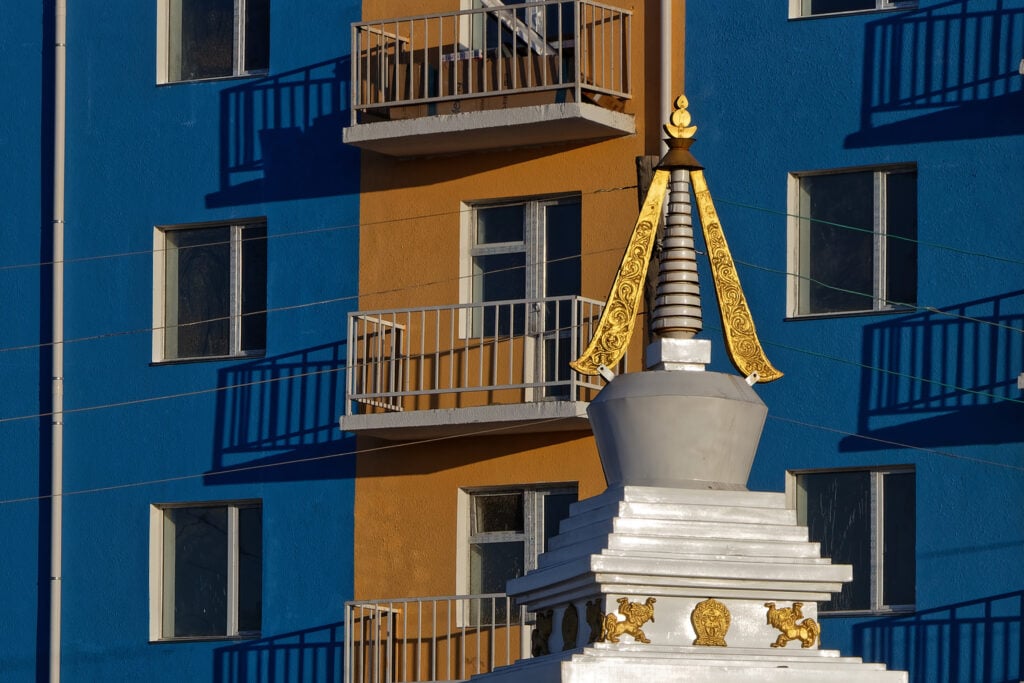
The capital of Aimag, with its population of around 40,000, is a somewhat neglected provincial town. The ger suburbs surround a town center with a large deserted square and a few administrative and commercial buildings. The market is at its heart. Despite this, Mörön has a pleasant atmosphere. The town is very popular with tourists, who stop here on their way from Ulan Bator, Darkhan or Erdenet, before heading north on a tarmac road to Lake Khövsgöl, three hours away. From the town center, you can admire the magnificent surrounding hills. It's an excellent introduction to exploring the region and heading further north to Lake Khovsgol.
9. Lake Khövsgöl Nuur, the Mongolian Sea
 sergei_Fotolia
sergei_Fotolia
Nicknamed the "blue pearl of Mongolia" for its crystal-clear water, Lake Khôvsgöl Nuur stretches over 136 km in a protected nature park in the north of the country. It alone contains 2% of the world's freshwater reserves! Fed by 96 rivers, it is linked to the great Siberian Lake Baikal by the Egiin River, a tributary of the Selenge River. It's the deepest lake in Asia, and in some places you can see down to a hundred meters under the water, so transparent is it?
10. Khatgal, the ideal place to plan a trip around the lake
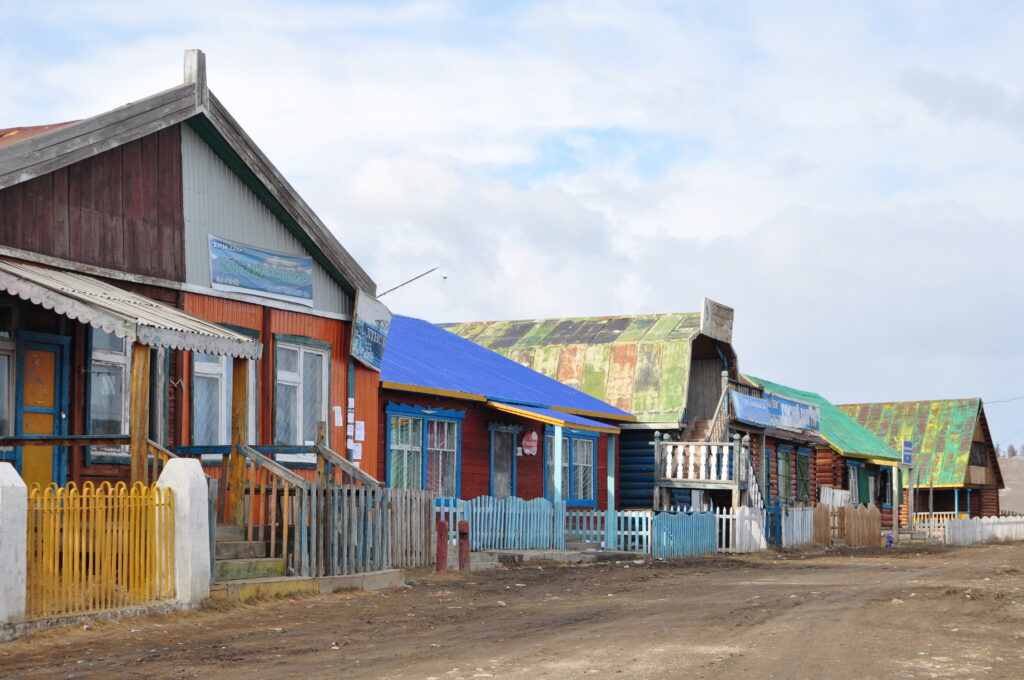
This village, located to the south of Mongolia's "blue pearl", at the mouth of the Egiin River, is the ideal place to prepare a stay around the lake. It offers comfortable accommodation, and most of its guesthouses offer services such as horse rental, hiking and motorized excursions. Few of the locals speak English, but the young people are keen to make contact with foreigners and have mastered a few words of English. Khatgal is a really pleasant place, which over the years has become a must for stays in Mongolia, and the starting point for all excursions around the lake and towards the Tsaatan region.
11. Excursion to the Khongor dunes

vova1675_Fotolia
Covering more than 900 km2, the Khongor dunes are the largest sandy areas in Mongolia. Locals call them the "singing dunes" because of the sound the wind makes as it moves the sand... This splendid spectacle takes place in the heart of the fascinating Gobi Desert, which covers over 30% of Mongolia. Discovering the dunes on the back of a camel rented from a nomadic family is certainly the best way to enter into the daily life of the country...
12. Bayanzag and its red sand cliffs

heckepics
In the heart of the Gobi Desert, Bayanzag has a charm like no other. Its yellow, orange and red cliffs, all shaped by the wind, remind us of the immense powers of nature. At sunset, a veritable palette of colors unfolds before your eyes. The site is also known as the cradle of the dinosaurs... Yes, according to various discoveries, these charming little creatures took refuge in the Gobi Desert! According to the locals, the ground is still littered with eggs and fossils. Grab your shovels!
13. Discover the horses of Khustain National Park
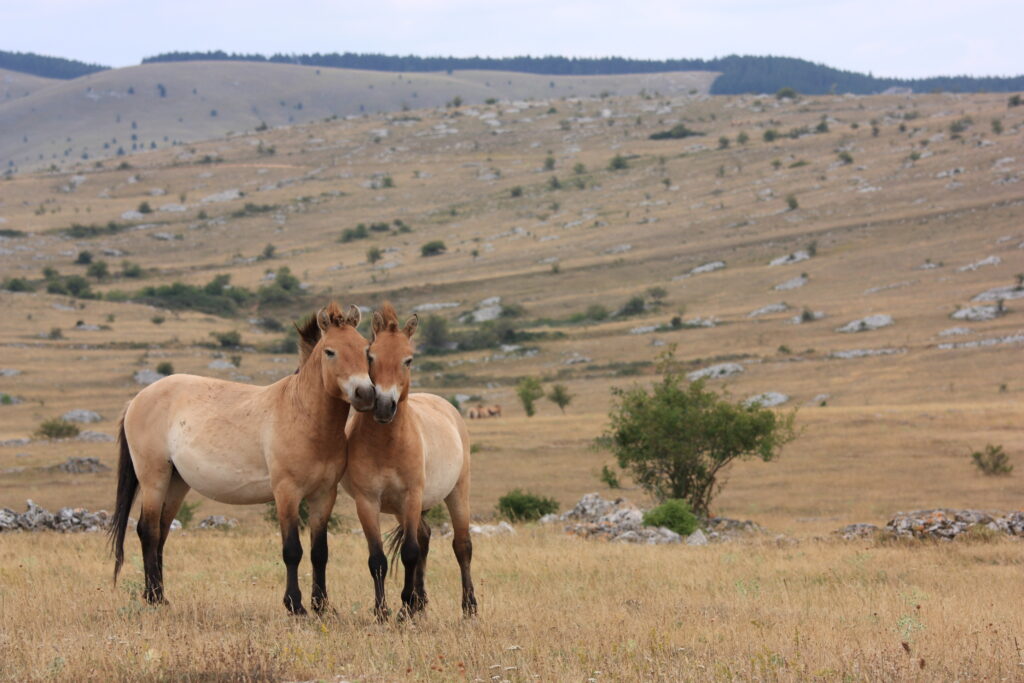
The entrance to this exceptional park is less than 100 km west of Ulaanbaatar. Easily accessible from the capital, it offers the chance to discover an extremely rare species of horse, Przewalski's horse. There are just over 2,000 individuals of this species in the world, more than 10% of which can be found in this park. The 50,000 hectares of the Hustai site are home not only to these rare horses, but also to a variety of other species such as marmots, gazelles, wolves, eagles and deer, favored by the local ecosystem.
If you would like to opt for a personalized travel itinerary in Mongolia, please click here. A tailor-made, responsible trip, direct with the best local agencies, awaits you!
Still not sure? Discover 5 good reasons to travel to Mongolia!
What to do in Mongolia in 15 days?
A 15-day trip to Mongolia offers plenty of opportunities to explore the country's cultural and natural riches. Here's a suggested itinerary to maximize your experience:
Day 1-2: Ulan Bator
- City tour: Discover the main historical and cultural sites, such as Gandan Monastery, the National Museum of Mongolia and Sükhbaatar Square.
- Shopping: Explore local markets such as Naran Tuul to buy souvenirs and handicrafts.
Day 3-4: Terelj National Park
- Hiking and horseback riding: Enjoy the beautiful scenery and outdoor activities such as hiking and horseback riding.
- Visit the statue of Genghis Khan: Take a detour to see the gigantic statue of Genghis Khan.
Day 5-6: Gobi Desert
- Khongor sand dunes: Explore the sand dunes and enjoy the panoramic view.
- Yolyn Am Canyon: Hike this spectacular canyon.
- Bayanzag cliffs: Visit the "flaming cliffs" and discover dinosaur fossils.
Day 7-8: Hustai National Park
- Przewalski's horse watching: Go in search of these rare horses and observe the local wildlife.
- Hiking: Take advantage of the hiking trails to explore nature. Discover the most beautiful treks in Asia.
Day 9-10: Lake Khövsgöl
- Relaxation and water activities: Enjoy the magnificent scenery and activities such as fishing, swimming and hiking.
- Visit Khatgal: Explore this picturesque village and take advantage of its tourist services.
Day 11-12: Karakorum
- Erdene Zuu Monastery: Visit this historic monastery and discover its cultural significance.
- Karakorum Museum: Learn more about Mongolian history.
Day 13-14: Khustain Nuruu National Park
- Wildlife watching: Observe Przewalski's horses and other wild animals.
- Hiking: Take advantage of the hiking trails to explore nature.
Day 15: Return to Ulaanbaatar
- Final shopping and sightseeing: Take advantage of your last day to do some last-minute shopping and visit sites you haven't seen yet.
- Departure: Get ready for your flight home.
This itinerary allows you to discover a wide variety of landscapes and cultures in Mongolia, while enjoying many outdoor activities.
Is it possible for a single woman to travel to Mongolia?
Yes, it's perfectly possible for a woman to travel alone in Mongolia. However, as with any solo trip, it's important to take certain precautions to ensure your safety and comfort. Here are a few tips for solo travel in Mongolia:
Pre-departure preparation
- Research and planning: Find out about local customs, areas to avoid and the best times to travel.
- Travel insurance: Take out travel insurance to cover medical expenses, repatriation and cancellations.
- Itinerary: Plan your itinerary and inform friends and family of your travel plans.
During your trip
- Safety: Avoid traveling alone at night, especially in isolated areas. Use public transport or the recommended cabs.
- Accommodation: Choose safe, well-rated accommodation. Youth hostels and guesthouses can be good options for meeting other travellers.
- Communication: Learn a few basic phrases in Mongolian to facilitate communication. Having a telephone with a local SIM card can be useful.
- Guides and organized tours: If you plan to visit rural or remote areas, consider hiring a local guide or taking part in organized tours.
When is the best time to visit Mongolia?
The best time to visit Mongolia is from May to September. Summer is ideal for outdoor activities such as horseback riding and hiking. However, if you like winter sports and don't mind extreme temperatures, Mongolia also offers winter travel. You'll discover transformed landscapes: lakes and rivers are frozen and the steppes are covered in a blanket of white.
Mongolia's climate is continental, with short, hot, rainy summers and long, harsh winters (average temperature -24°C). Due to the country's average altitude, temperature variations can be very significant from one day to the next. Mongolia enjoys an average of 250 days of sunshine a year. Ulan Bator is the coldest capital in the world. The peak tourist season in Mongolia runs from mid-June to mid-September. Outside this period, temperatures are too cold.


